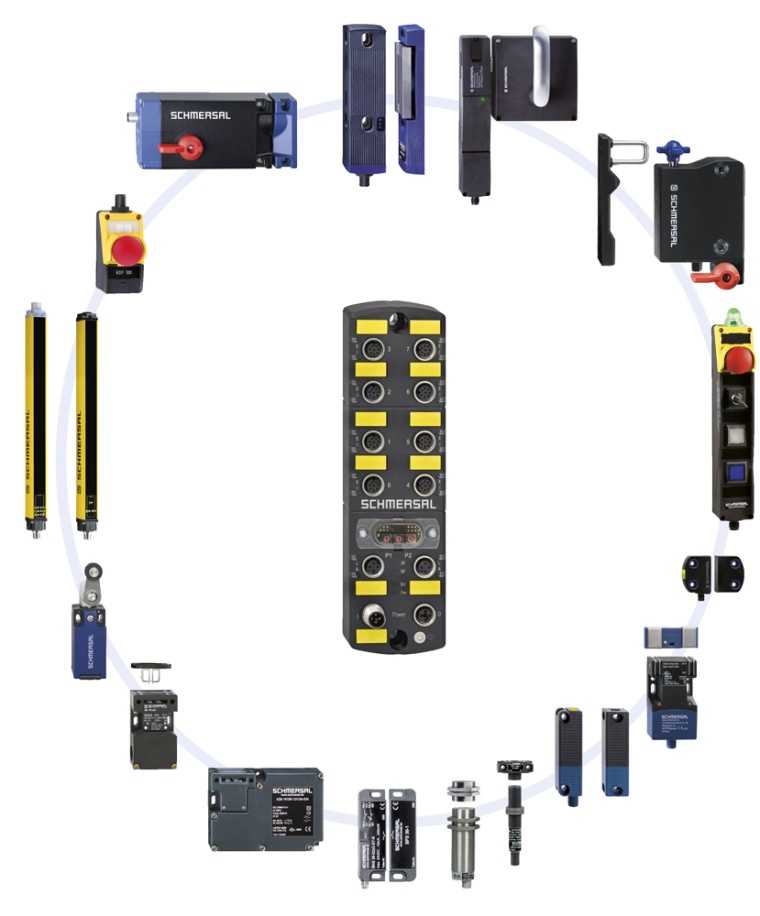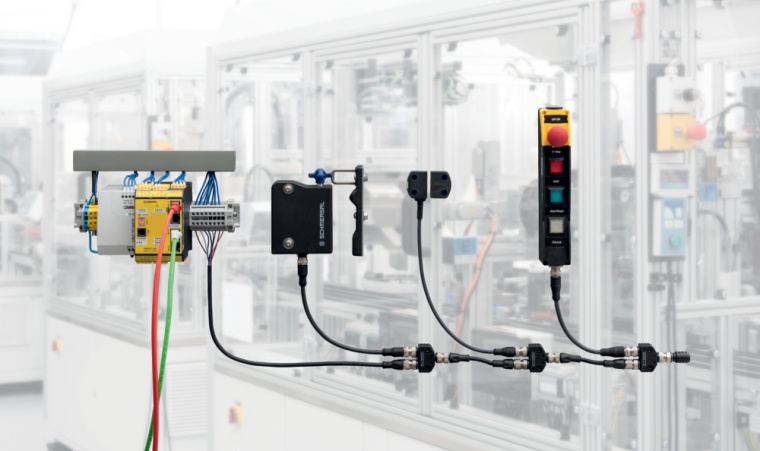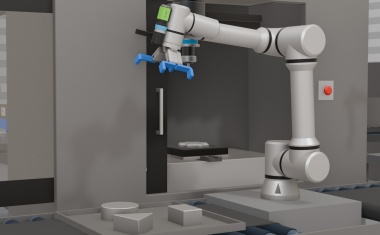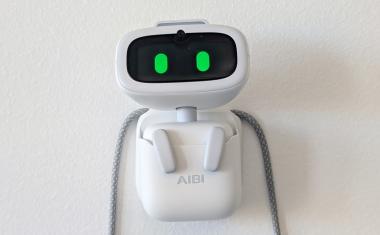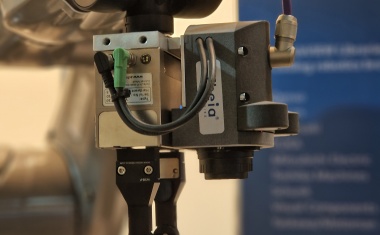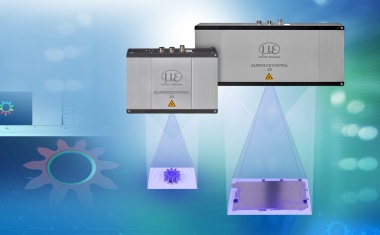The Variety of Continuous Networking in Machine Safety
Industry 4.0, connectivity and networking are also hot topics in machine safety. From the user’s perspective, there are a number of concepts – each slightly different, but all sharing one thing in common – their use can boost productivity, transparency and flexibility in production.
A characteristic feature of machine safety is the need to consider networking on two levels. Firstly, there’s safety-related communication and the need to take into account the Machinery Directive and requirements of harmonised standards. Then there’s the operational perspective – non-safety-related signals, the evaluation of which offers benefits in terms of predictive maintenance and machine operation optimisation. There are a number of networking options at both levels, and these options are increasingly being used.
Four Concepts for Networked Machine Safety
For customers of the Schmersal Group, networking starts at machine safety level with ‘IO Parallel’ as a universal, cost-effective standard solution. ‘IO Parallel’ means that all cables are routed centrally to a control cabinet, where they are connected to terminal blocks.
Alternatively, if the user only uses electronic safety switchgear, he can use safety installation systems that are available as a passive distribution model (PDM) or as a passive field box (PFB). These allow mixed series connection with up to four different electronic safety switchgear devices per module. The corresponding wiring is already specified. This helps to save time and prevents incorrect wiring. Multiple modules can be connected to larger systems.
Another option is to use ASi Safety at Work as a safety-related bus system. All major series of safety switchgear are available with integrated ASi Safety Interface. With this platform, the user can realise individually scalable safety solutions for different sizes of machine, as well as benefit from an extensive range of diagnostics functions.
The Safety Fieldbox for Complex Machines
The fourth option is the most comprehensive – the Safety Fieldbox for installation of as many as eight different safety switchgear devices, including safety sensors, solenoid interlocks, safety light grids and control panels. This solution is suitable for ‘Safety Integrated’ concepts, where the safety function is integrated into the operational control system. Communication with the control system is via Profinet/Profisafe. An eight-pin M12 connector is used as a universal device interface.
In practice, this means that the Safety Fieldbox can be used as an interface to connect all safety switchgear devices, e.g. in a plant section, workplace or hazard area – including in mixed operation. When the Safety Fieldbox is used, solenoid interlocks of different types (electronic and electromechanical) require just one device connection. Safety switchgear from other manufacturers can also be integrated, using adapters where necessary. This solution brings a great advantage for users – simplified and, consequently, more cost-efficient wiring of safety switchgear devices.
Moreover, there is no need for complex additional installations for controlling the interlock or reading diagnostics information. This solution is also suitable for larger machinery and plants thanks to straightforward series connection of up to ten Safety Fieldboxes with 80 safety switchgear devices. Within this, the safety control system can access each individual switchgear device. An integrated digital input at each device slot enables evaluation of the diagnostics signals of all connected safety switchgear devices.
High-Speed Diagnostics BusEnables Fast Data Transmission
The electronic safety switchgear in the Schmersal range is available in two versions – with a digital diagnostics output or with a serial diagnostics bus of the latest SD 4.0 version. The bus system allows electronic safety sensors and solenoid interlocks fitted with an integrated SD interface to transmit detailed status and diagnostics data to a higher-level machine control system. These data can include the number of switching cycles as well as limit and distance warnings. In addition, solenoid interlocks can also be locked, released and configured via the SD interface – one such use would be to adjust the latching force of the MZM 100-SD electromagnetic solenoid interlock.
One of the benefits of this solution is the increased productivity of the respective machine thanks to early detection of irregularities. Weak points in production can also be identified – for instance, if operators regularly intervene in a process at a guard door or hazardous area, the diagnostics data will indicate this during evaluation allowing action to be taken to retrain the operators. All in all, the user has a variety of additional information at his fingertips, allowing him to evaluate and optimise based on the results of his production processes.
Different Networking Possibilities and Simple Application
The networking concepts described in this article, such as installation systems and fieldboxes, can be used for the transfer of data collected via SD 4.0. Alternatively, the user can make use of a gateway for one of the common bus systems. The third or fourth option is to use the Protect PSC1 safety controller with integrated SD interface. This option offers a range of interfaces and protocols for data transmission by means of connection to common control systems like Profinet, Ethernet/IP, Ethercat and OPC UA.
In addition to a higher information density, which can support higher machine productivity, the use of the SD bus offers greater benefit in terms of networking. It also simplifies installation thanks to safety switchgear wiring using M12 connectors. Furthermore, by forming safe shutdown circuits, the number of safety inputs can be reduced with no decrease in the Performance Level. A maximum of 31 devices can be connected in each safety circuit – including in mixed operation. This means that different types of safety switchgear device, including safety sensors and solenoid interlocks, can be integrated into a safety circuit.
How to Achieve Predictive Maintenance
The networking of safety switchgear at a higher level also creates the conditions for effective predictive maintenance, which is currently in testing by multiple production companies as one of the first use cases for Industry 4.0. This is where OPC UA comes into play. This communication standard for M2M communication creates, inter alia, the conditions in which the user can retrieve comprehensive data sets from all safety sensors in the Schmersal range in machine-readable format and with semantic description. This could include status information for safety outputs, safety-related characteristic values, information on sensor service life as well as order information.
This information can be viewed on screens and mobile devices, including tablets and smartphones. It also facilitates remote monitoring of production processes. Additionally, it gives machine engineers and operators a system-independent solution for consistent communication of diagnostics information, plus networking via OPC UA provides access to service support and asset services as part of a Digital Asset Management (DAM).
From Continuous Data Communication to Continuous Networking
The integration of OPC UA into the PSC1 also creates the conditions in which the current data from Schmersal safety switchgear devices, and thus their digital twin, are available for manufacturer-independent exchange, e.g. from one machine to another or for cross-plant communication.
The company is, therefore, taking the next logical step towards continuous data communication, at the same time giving users of machines and systems real added value. In parallel, connectivity is being pushed forward at machine safety level in response to the growing trend towards continuous networking of all components and machines at production level.
Author
Christian Heller, Head of Product Management
